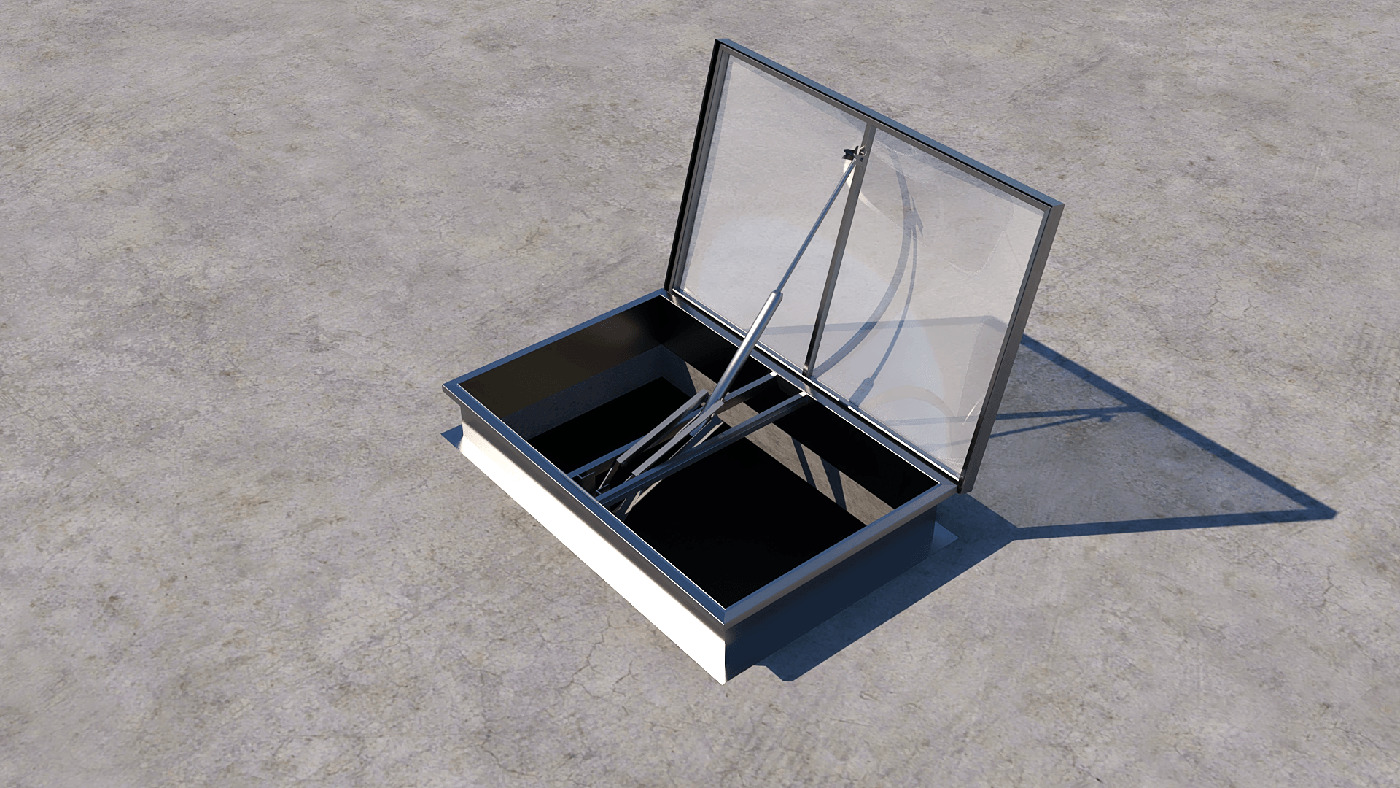
Skylight type ventilators
Actualizado a fecha: 17 April, 2020
There are several types of ventilators for the elimination of smoke produced in case of fire, we have already spoken in previous posts about the louvered ventilator or LAM model and the twin flap ventilator or DVP model, today we will talk about the Skylight type model. It takes this name because of its appearance as it is very similar to a skylight for roof lighting, but unlike these, these ventilators are practicable.
These ventilators are made to measure in each work depending on various factors such as the surface required for smoke evacuation or distance between belts, etc. Their minimum size is 1×1 m and they can reach a maximum size of 2×2.2 m. If larger sizes of aerators are required, we would have to use a type of twin flap ventilator, such as our DVP model or the LAM model with slats.
The advantages of Skylight type ventilators:
- Its aesthetic appearance. If we have a cover with skylights for natural lighting and we place between them ventilators of this type, we will have certain homogeneity in the general appearance.
- They have a great capacity of illumination.
- It is an economic ventilator in comparison with other models.
- They have a high effective surface of smoke evacuation, which allows to reduce the number of these elements according to the total necessary surface.
- They have a high thermal insulation capacity, which can be supplemented with the possibility of adding thermal insulation of up to 40 mm, both at the base and at the ventilator door itself.
- The base of the ventilator can be prepared both for direct installation on sandwich panel roofs and with the possibility of finishing off on deck-type roofs.
The opening of these skylight type ventilators can be either electric or pneumatic and they have an integrated auxiliary opening system with a fuse and CO2 bottle that allows its opening in case the rest of the opening systems fail.
They are CE marked and have undergone all the tests required by the UNE 12.101 – 2 standard.
